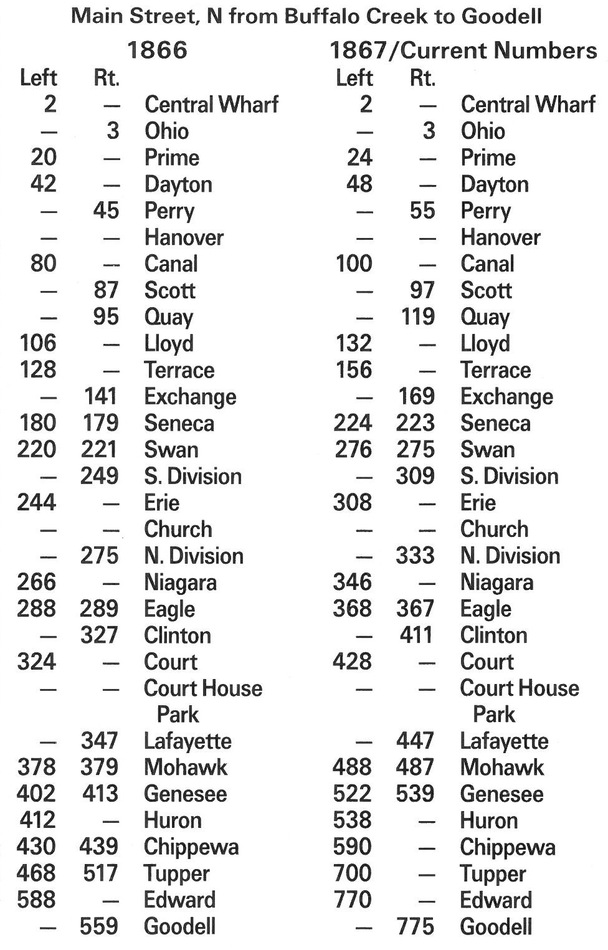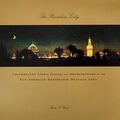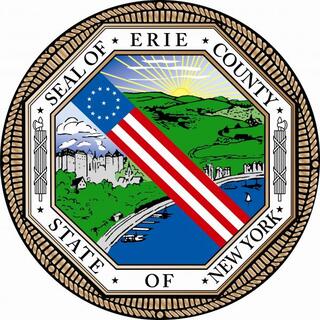I am studying the history of photography in Buffalo, N.Y. As part of my research, I took my database of photographers and sorted it by address and year. The goal was to watch the evolution of photo studio occupants through the years to try to see patterns that would give clues about possible relationships between these photographers. As it is, the studios were mostly on Main Street in the nineteenth century. As I was showing my results to Paul Redding of the Western New York Heritage Press, he cautioned me to be careful of a poorly defined address change on Main Street in 1867 that has been perplexing historical researchers for years. I went back to my data and found that it is true that several photographers, who seemed otherwise stable, had address changes in 1868. I looked for the pattern and found that while two changed by 62 numbers, others changed by more. Paul Redding said that when he looked into the Common Council proceedings, there are references to the change, but nothing definite about what the change was or why.
I called to the city surveyors’ office and had a conversation with Mr. Howard Mandell, the current city surveyor. Mr. Mandell said that the present numbering system in the city is one number every ten feet. A quick comparison of the 1868 city directory to the current city directory indicates that the plan “determined upon the by the city surveyor in the year 1867,” as it was referred to in the city council proceedings of the time, is the one still in use. The comparison of the 1866 city directory to the 1868 directory shows the change. Since the current Main Street addresses give the distance from the river when multiplied by ten, it should be easy to calculate the old rule. For example, the northeast corner of Main and Perry is 55 Main Street in the current system, 550 feet from the point of origin. The old address was 45 Main Street so:
550 feet/45 Main St. = 12.22 feet/number on Main St.
So the old system was 12.22 feet per number. Let’s check it again at Main and Quay Streets. The new address at the northeast corner is 129 Main Street, 1290 feet from the beginning. The old number is 95 Main Street.
1290 feet/95 Main St. = 13.58 feet/number on Main St.
They don’t come out the same. Let’s try the next block, Main and Exchange Streets. The new address at the northeast corner is 177 Main Street, 1770 feet from the beginning. The old number is 141 Main Street.
1770 feet/141 Main St. = 12.25 feet/number on Main St.
Okay, so the old system was about 12 or 13 feet per number, is that so bad? Maybe we can look at it another way.
First 550 feet of Main St. = 12.22 feet/number
Next 740 feet of Main St. = 14.80 feet/number
Next 450 feet of Main St. = 10.43 feet/number
The difference in the numbering systems between the next two adjacent blocks on Main Street is over 40%. So it seems that inconsistency was probably the motivation for the change. The Common Council proceedings of the time said that only 100 miles of street were numbered at all in 1867, and Main Street may have been better than most parts of the city. Mr. Mandell speculates that the Post Office probably pushed for the regularization of the street addresses. Today, planning and consistency are even more important, given the needs of everyone from the fire department to the pizza delivery boy.
The address change on Main Street in 1867 that Paul Redding said has been perplexing historical researchers for years wasn’t poorly defined at all. The problem is that the old system is as difficult to work with now as it was then.
There was one photographer (along with many others I’m sure) on Main Street who didn’t want to go along with the change. The venerable old Donald MacDonell, among the earliest studios in the city, was still using his 1866 and 1867 address in 1868, his last year in business.









